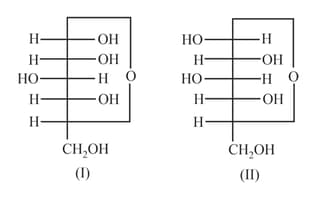M K Verma Solutions for Chapter: Biomolecules, Exercise 1: TOPICWISE QUESTIONS
M K Verma Chemistry Solutions for Exercise - M K Verma Solutions for Chapter: Biomolecules, Exercise 1: TOPICWISE QUESTIONS
Attempt the free practice questions on Chapter 6: Biomolecules, Exercise 1: TOPICWISE QUESTIONS with hints and solutions to strengthen your understanding. Chapterwise/Topicwise Daily Practice Problems (DPP) Organic Chemistry 2 NEET solutions are prepared by Experienced Embibe Experts.
Questions from M K Verma Solutions for Chapter: Biomolecules, Exercise 1: TOPICWISE QUESTIONS with Hints & Solutions
Given: specific rotation of sucrose, maltose, glucose, fructose in aqueous, solution are andrespectively. For 'invert sugar', the correct statements are?
(a) 'Invert sugar' is prepared by acid-catalyzed hydrolysis of maltose
(b) 'Invert sugar' is an equimolar mixture of glucose and fructose
(c) Specific rotation of 'invert sugar' is
(d) On reaction with water ' invert sugar' forms saccharic acid as one of the products.
Lactose consists of:
Analyse the following reactions and identify incorrect statements where and are two different aldohexoses and is a ketohexoses.
Disaccharide
Disaccharide
Disaccharide
(a) and are reducing sugars.
(b) and have glycosidic linkage between two monosaccharide units.
(c)The two monosaccharide units of disaccharide 'C' are epimers.
(d) All the three disaccharides undergo mutarotation.
Which of the following is incorrect about sucrose?
Amino acids are classified as acidic, basic, or neutral depending upon the relative number of amino and carboxyl acid groups in their molecule. Which among the following are acidic?

Maltose consists of
Methyl D-glucoside on reaction with consumes two moles of the reagent and produces the dialdehyde and one mole of . The result of this reaction proves that glucose has

Which of the following is not true for the structure (I) and (II)?
